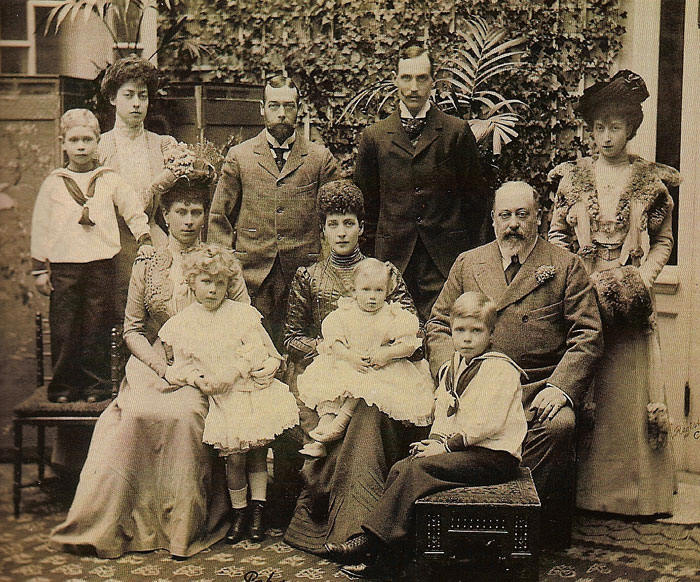November 09
Edward VII's Birthday
 |
|
Edward VII (1st row right) and his family |
|
November 09 |
|||
|
Edward VII's Birthday
|
|
Edward VII (or "Bertie" to
his intimate friends) was the symbol of opulence throughout Europe. His
corpulence, addiction to beautiful women, parties, yachting, and racing made him
a popular figure of his
time. His extravagance was matched by an extraordinary charm, urbanity,
intelligence, wit, and affability that made his excesses forgiven by
everyone except his mother, Queen Victoria. Crêpes Suzette were created for the Prince by Henri Charpentier in 1896 when he was a chef at the Cafe de Paris in Monte Carlo. When notified that the Prince and several companions had reservations for lunch, Charpentier created a special sauce for the crêpes dessert. As he was nervously reheating the sauce near the Prince's table, the sauce caught fire. At first Charpentier thought that the sauce was ruined, but when he tasted it, he found that the flaming substantially improved the sauce's flavor. The Prince was impressed with the dessert and asked Charpentier what it was called. The chef replied "Crêpes Princesse". (In French, the adjective's gender is ruled by the gender of the noun that it modifies and crêpes is a feminine noun.) The Prince, fully aware of French grammatical rules, winked and replied, "How can that be, since there is no princess present? There isn't even a lady." One of the Prince's friends had brought his seven year old daughter, Suzette, to the luncheon. When Suzette heard the Prince say that there wasn't even a lady present, she stood up and stated that she was a lady. The Prince laughed and asked Charpentier to change the name of the dish to Crêpes Suzette in honor of their young luncheon guest.
Since
Charpentier initially named this classic dish in honor of the prince, it
seems an appropriate way to celebrate his birthday which we suggest
pairing with a viewing
of Edward the Seventh (1979). |
||||
|
Crêpes Suzette
|
||||
|
Crepes Ingredients |
Sauce Ingredients |
|||
|
||||
|
Instructions |
||||
|
||||
© 2011 Gordon Nary and Tyler Stokes